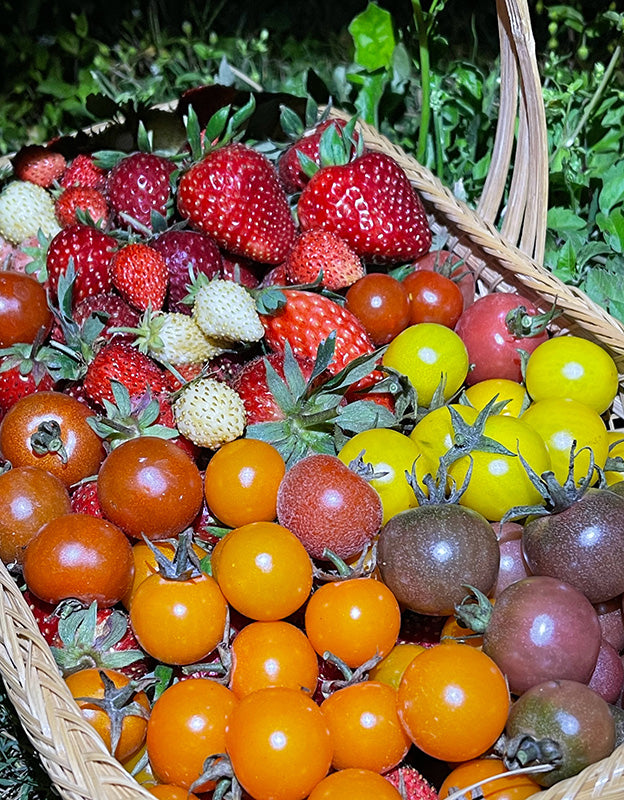By Michael Jenkins

In our previous two blogs about tomatoes and tomato growing, we’ve looked at some of the problems that home gardeners often encounter with their tomato plants. Now, here in part three, we’re going to take a turn for the positive and explore some ways to make tomatoes more productive in the home garden. Home-grown tomatoes are a joy and a pleasure, and ensuring that your tomato plants are as productive as possible is the summertime quest of many a home gardener. While everyone has their own tips and tricks for growing tomatoes, we’ve put together a few tried and true approaches that might just help you grow the best tomatoes possible.
Two of the most important steps for growing successful tomatoes happen before the growing season begins: choosing a high yielding tomato varietal and ensuring that your tomatoes have proper soil are vital parts of growing productive tomato plants. And better yet—both steps are easy! There are hundreds of varietals of tomato available to the home gardener, and many of them are vigorously productive. These include Mortgage Lifter, 555, Black Krim, Sungold, Celebrity, Big Beef, and Green Giant. Likewise, it’s fairly easy to create the soil conditions for productive tomatoes. Tomatoes love rich, humus soil replete with nutritional organic content. If you’re gardening in beds, enriching your soil with good compost is always helpful in growing tomatoes. For those of you gardening in containers, using a good potting mix designed for tomatoes is a great step in ensuring a successful tomato crop.

Growing tomatoes is like buying real estate: it all comes down to location, location, location! Your tomatoes will benefit from the right spot in the garden, one with plenty of sun and good ventilation. Sun, as tomatoes love sunshine and heat to help them grow, and ventilation to promote tomato plant health and avoid many potential plant diseases. This is one potential advantage container gardeners have: you can move your plants around a bit and find the right spot for them. All plants have preferred conditions, and once you situate yours properly they’ll be well on the road to a successful and productive tomato growing season.
Protecting your plants is another important step in ensuring a good tomato harvest. Your garden is part of the ecosystem, and may critters and bugs love tomatoes just as much as you do. We’ve talked elsewhere about how to deal with garden pests, but birds, squirrels, rabbits, and the like require a bit more care. Location helps—planting tomatoes in the open well away from shrubs, bushes, and trees can cut down on visits from hungry creatures. If you have a deck or elevated patio, that might just be the safest place for your container tomatoes. Keeping them off the ground can help cut down on losses to visiting animals. Likewise, using a good garden netting or other cover can help keep birds and animals away from your tomatoes. It doesn’t hurt them, and makes life much easier for you and your plants!

Tomatoes need proper nutrition in order to grow, so in addition to providing a good growing medium, feeding your tomatoes throughout the season is important to their success. Most tomato varietals benefit from regular application of a fertilizer relatively high in phosphorus—that’s the middle number in the NPK ratio found on all bags of fertilizer. Phosphorus promotes root grown, which is vital to the health of your tomato plants, and also promotes flowering and flower growth. As tomato flowers (hopefully!) become tomato fruits, you’ll want to ensure that your plants get enough phosphorus as they grow. Most garden supply stores sell fertilizer specifically formulated for tomatoes, and that can make things easy when try to figure out what to feed your plants all year. Just apply fertilizer according to the manufacturer’s instructions and your tomatoes will thank you later.
Finally, let’s talk about pollinating your tomato plants. Most flowering vegetable plants benefit from pollination, and tomatoes are no exception. There are a couple of approaches to pollination that you can make use of. Natural pollinators like bees are the best, as they help not on your plants but the environment as a whole. Support bees in your garden by avoiding chemical insecticides, planting bee-friendly plants, and ensuring that there’s a water source for bees available. As the bees and other pollinators do their work, you can help by occasionally shaking your flowering tomato plants in order to help spread pollen between them. It’s a simple and easy thing, but it works—especially if you have a number of different plants all grouped together.
As always, we hope these tips help you get the most out of your tomatoes this season. If you have further questions, or have some tomato secrets you’d like to share, please reach out. We love hearing from you, and we love knowing that Gardzen has become a community of people dedicated to the joy of gardening!

Leave a comment